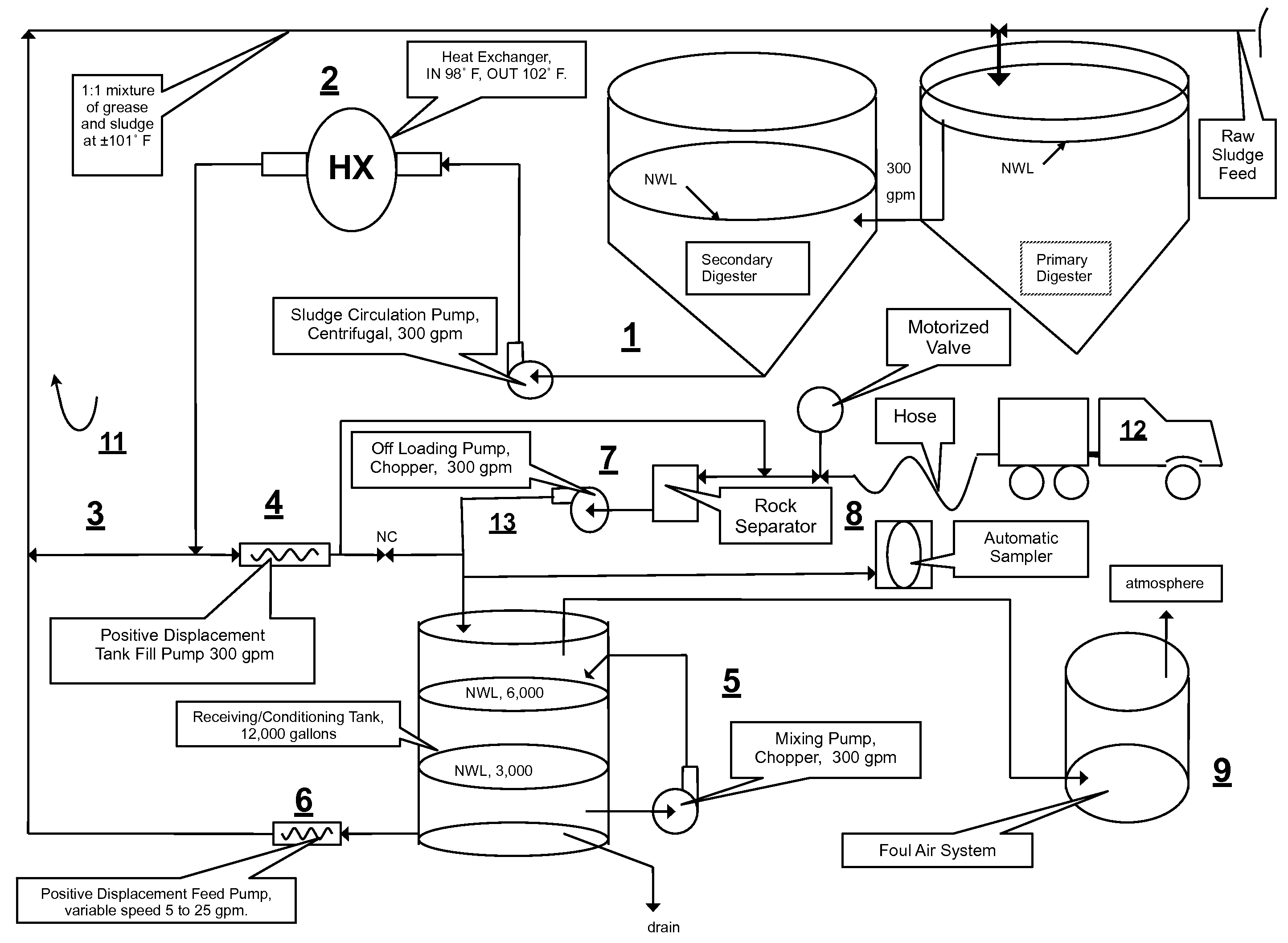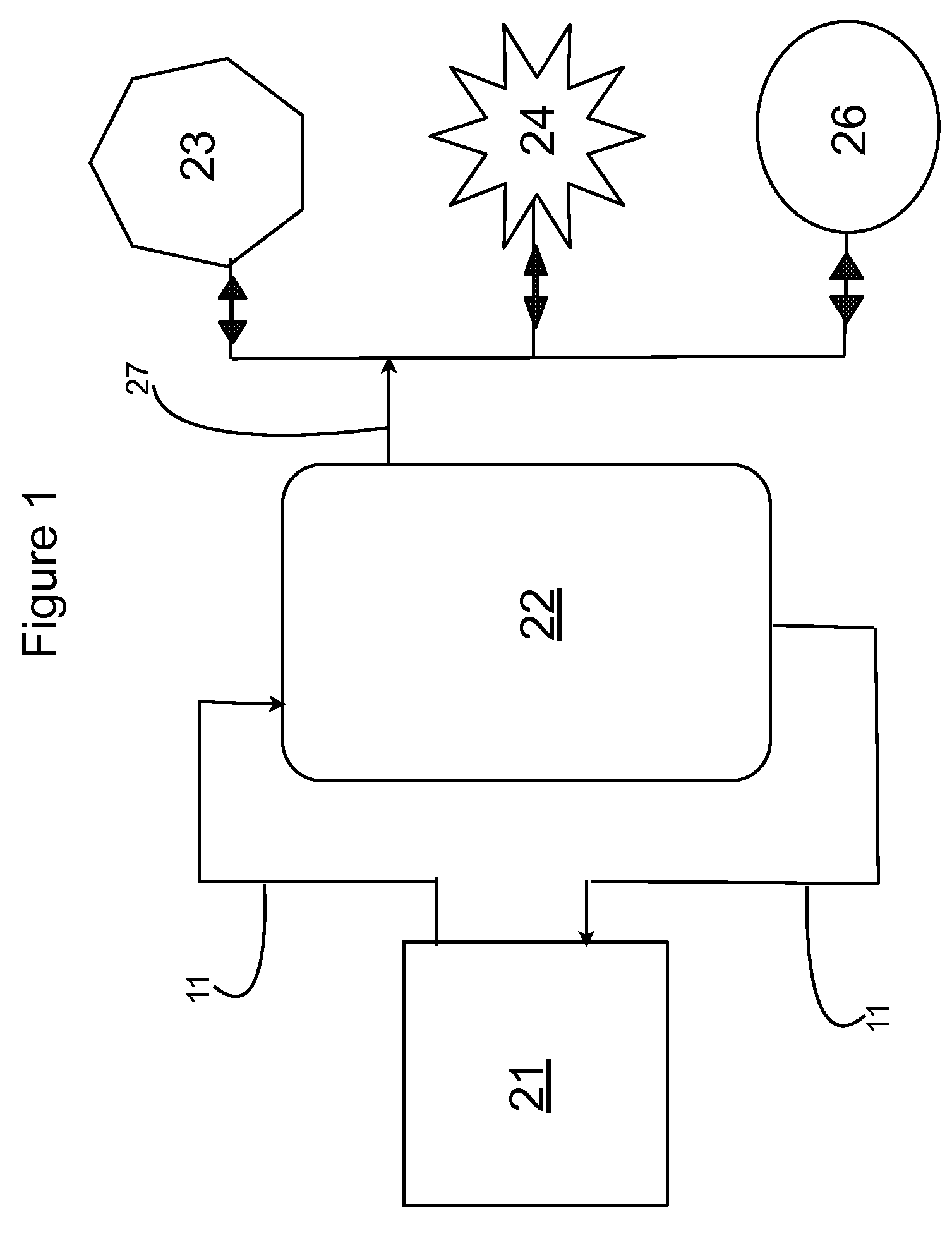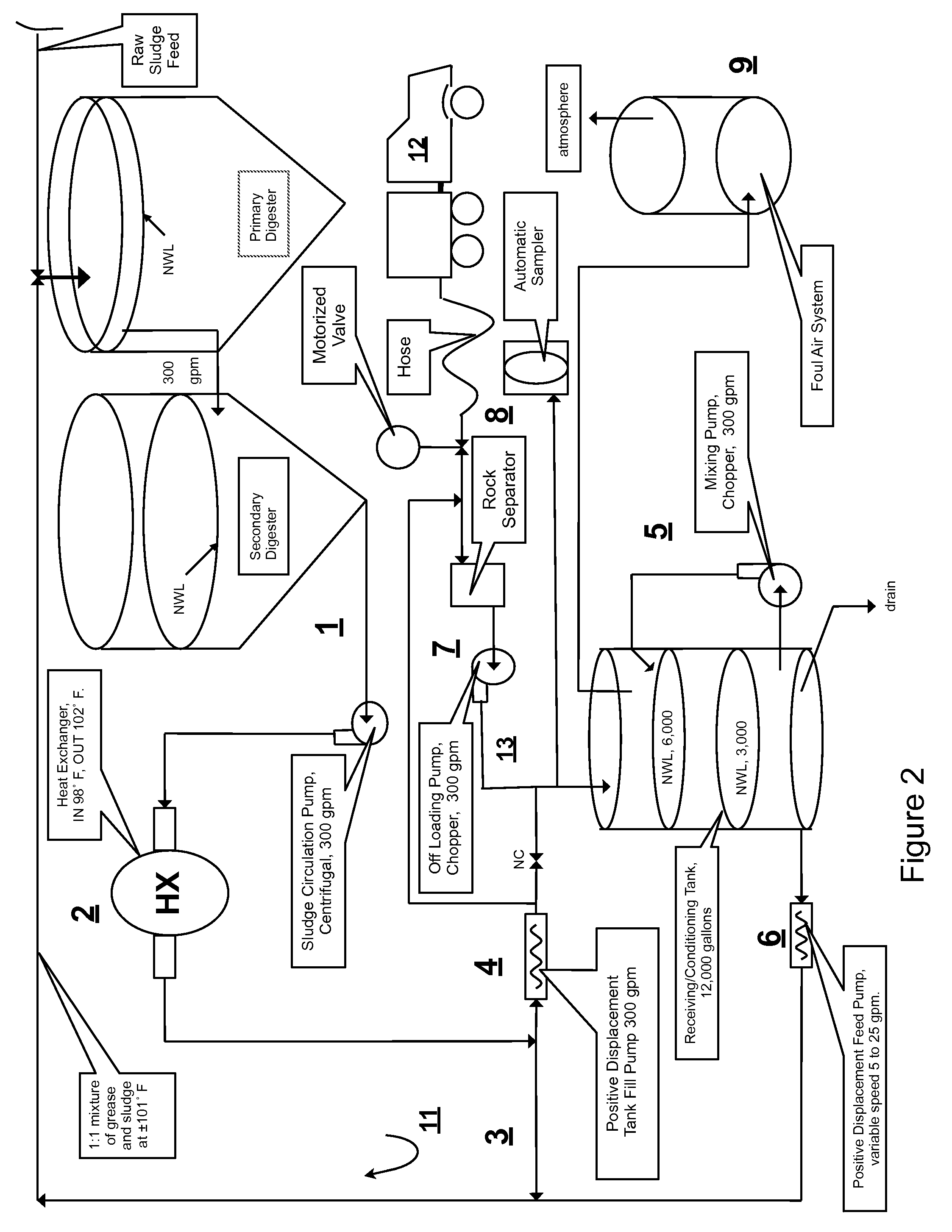Integrated cogeneration wastewater sewage and waste polar fats/ oils/ greases/waxes (FOG) waste treatment method and facility
a cogeneration wastewater and treatment method technology, applied in the field of integrated digestible wastes (sewage and otherwise), and waste polar fats/oils/greases/waxes (fog) treatment methods, systems and facilities, can solve the problems of large percentage of sewer system failures and overflows, and failure of the functional components of the sewer system
- Summary
- Abstract
- Description
- Claims
- Application Information
AI Technical Summary
Benefits of technology
Problems solved by technology
Method used
Image
Examples
Embodiment Construction
[0021]Looking at FIG. 1 the invented integrated cogeneration system for treating raw sewage, and polar fats / oils / greases / waxes (FOG) wastes includes a FOG receiving and pre-treatment station 21 receiving actively digesting sludge circulating in a slipstream loop 11 from the base or bottom of a digestible wastes treatment facility 22, and outputting a highly bioreactive, flowable, feedstock slurry mixed with actively digesting sludge circulating in the slipstream loop 11 to the top or head / input end of the wastes treatment facility 22. Produced methane gas is either used to generated electrical power 23, combusted to produce thermal energy 24, or stored 26 for future use.
[0022]The wastes treatment facility 22 is located in Millbrae, Calif. and is an Acid / Gas Mesophilic acid phase—Mesophilic gas phase (AGMM) system where a primary anaerobic digester receives raw sewage, and pours over to a secondary anaerobic digester. The overall objective of the integration was to increase steady-st...
PUM
| Property | Measurement | Unit |
|---|---|---|
| temperatures | aaaaa | aaaaa |
| temperature | aaaaa | aaaaa |
| volume | aaaaa | aaaaa |
Abstract
Description
Claims
Application Information
 Login to View More
Login to View More - R&D
- Intellectual Property
- Life Sciences
- Materials
- Tech Scout
- Unparalleled Data Quality
- Higher Quality Content
- 60% Fewer Hallucinations
Browse by: Latest US Patents, China's latest patents, Technical Efficacy Thesaurus, Application Domain, Technology Topic, Popular Technical Reports.
© 2025 PatSnap. All rights reserved.Legal|Privacy policy|Modern Slavery Act Transparency Statement|Sitemap|About US| Contact US: help@patsnap.com



